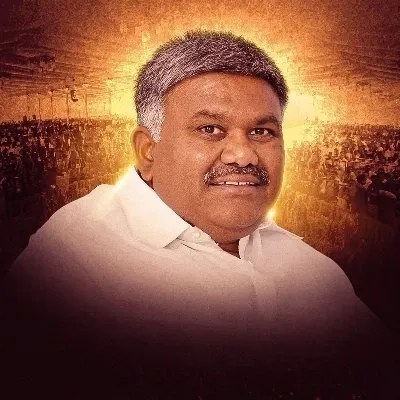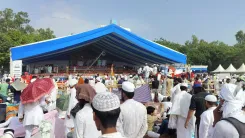Why Was YSRCP Leader Detained Amid Tension in Anantapur?

Synopsis
Key Takeaways
- Political tensions can lead to significant unrest in local communities.
- Law enforcement's role is critical in managing political conflicts.
- Legal permissions must be upheld to ensure justice.
- Opposing political factions can mobilize quickly to challenge rivals.
- Community safety is paramount during political events.
Amaravati, June 29 (NationPress) In a tense situation in Tadipatri town, located in the Anantapur district of Andhra Pradesh, police detained YSR Congress Party leader and former MLA Kethireddy Pedda Reddy as his return to his hometown after an absence of a year sparked unrest.
Upon hearing of Pedda Reddy's arrival, Telugu Desam Party (TDP) leader and municipal chairman J.C. Prabhakar Reddy, along with his supporters, began marching towards his residence.
Prabhakar Reddy, who also holds the title of former MLA, insisted that Pedda Reddy should be barred from entering the town.
Supporters of the TDP from nearby villages gathered outside Pedda Reddy's house to protest his return.
Police quickly arrived at the scene as tensions escalated, fearing a possible clash between the opposing groups.
To prevent any potential law-and-order issues, police detained Pedda Reddy, compelling him to enter a police vehicle and transporting him to Anantapur. Police officials stated that this action was a precautionary measure.
Peddar Reddy had previously vacated Tadipatri on the day of last year's general election vote counting due to violent clashes.
Recently, the High Court had granted Pedda Reddy permission to return to Tadipatri. He had submitted a contempt of court petition, claiming that the court's directives were being ignored.
On June 14, police had intercepted the YSRCP leader at Thimmampalli in the Yellanur mandal while he attempted to head towards Tadipatri.
Following his announcement to return, TDP leaders organized protests, leading to the deployment of additional police forces to ensure public safety. Pedda Reddy was stopped at Thimmampalli.
He criticized the police for allegedly siding with Prabhakar Reddy and blocking his access to his own home in Tadipatri.
Despite having received High Court approval, he stated, “The police are denying me access. I own a house in Tadipatri and haven’t been able to visit it for a year.”
The YSRCP leader expressed that Prabhakar Reddy is afraid of being exposed for his illegal activities if he returns to Tadipatri.






